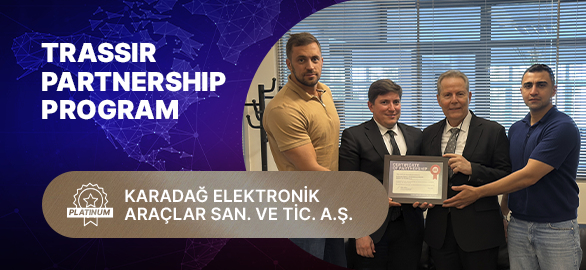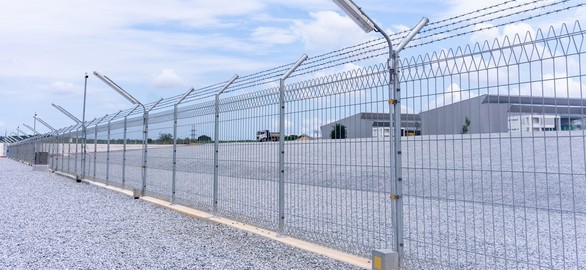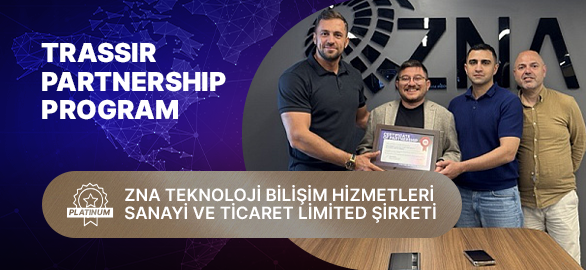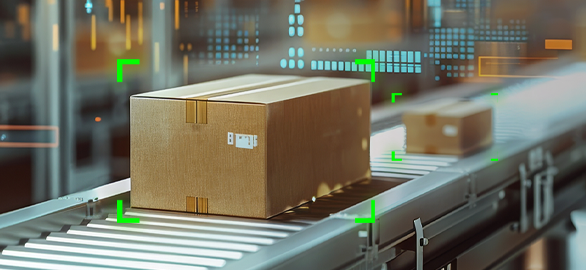
Video surveillance market trends: camera or cloud
Data and forecasts from analytical agencies
According to the Omdia marketing research agency, 117 million professional cameras were sold worldwide in 2020 (only 16% had deep learning analytics functionality), 42% of them with a resolution of more than 4 MP. Their share is projected to be 74% by 2025 . And by the end of this year, Omdia predicts more than 1 billion installed cameras. They will generate a huge amount of information, and the question that arises is what to do with it.

Cloud architecture outperforms local in terms of solution deployment time and the amount of capital costs. Nevertheless, the number of video surveillance and video analytics solutions based on cloud services is growing, including experts who associate the development of the market in the coming years with this area. Thus, the cumulative average annual growth rate of cloud video analytics from 2021 to 2028, according to Telecom Daily forecasts, will be 17.5%. This is 6.2% more than the video analytics market as a whole. It should be noted that retail has been an important driver of cloud video analytics for the last couple of years.
The surge in artificial intelligence (AI) introduction over the last decade has been closely linked to hardware development. More and more advanced chipsets initially created for the huge smartphone market have now begun to penetrate others, in particular video surveillance. The security camera market for AI chipsets is expected to grow from 2% in 2020 to 10% in 2025.
Application of video analysis based on deep learning
The fields of application of video analysis based on deep learning can be divided into the following:
Safety and security This includes all the functions of video analysis: object detection, perimeter violation, abandoned objects, private zones/blurred faces, unauthorized passage of several people using one presented identifier (passage by train), recognition of numbers for access control.
Business analytics This includes applications such as heat maps, visitor counting, monitoring queue length, time spent in a specified zone, flow of people, and age and gender recognition.
Monitoring traffic flow This includes applications designed to detect traffic violations, accidents and incidents on the road, as well as to control the flow of traffic.
At the moment, most analytical functions on the cameras can solve security and safety problems. But by 2025, the balance will shift toward solving business problems as business analytics increases its share in the functionality of such cameras. Projects using these analytics will become a growth driver for this market segment, because end users are aware of the resulting return on investment.
Cameras with on board analytics
Based on the tests conducted by the TRASSIR camera team, the market distinguishes groups of cameras by accuracy:
-
60-85% – the algorithm of video analytics at this accuracy allows you to search through data for the operator, who visually notes false positives, thereby reducing search time for incidents and increasing reaction speed to them.
-
85-90% – this level of accuracy allows you to create automated control systems. They can function without operators, using only an analyst who processes data on large distributed systems.
-
90-95% – this accuracy makes it possible to create fully automated control systems.
-
95-99.9% – modules with this level of analytics accuracy allow you to create automated control and response systems.
Cloud video surveillance
There are currently a large number of cloud video surveillance services that offer users the opportunity to use video analytics with different approaches to organizing a video analysis system (which may affect its technical indicators):
-
Object or event detection and recognition takes place directly on board the camera. Events are recorded in the log on remote servers of the cloud service, as well as notifications for all interested users and possible programmed response processes. With this approach, you can save on network bandwidth and significantly increase your likelihood of working with really important data. Moreover, it is possible to work retrospectively with video recordings if the cameras support video metadata.
-
Object or event detection takes place on board the camera, and further recognition is performed using software on a cloud server.
-
Video analysis is performed entirely on cloud servers. At the same time, the video stream from the cameras is broadcast to the "clouds" for the entire period the user needs an analysis of the processes. Using this approach, you can save on video cameras thanks to reduced requirements for their technical characteristics. The customer has the flexibility to use different types of video analytics for different devices and can adapt the functionality of the system to current needs by choosing the types of licenses or subscriptions. It should be noted that the ability to use various types of video analysis and license changes exists on cameras in the upper price segment.
In some cases, cloud video surveillance services can provide partner services: with this approach, video data transmitted to cloud service servers is then transmitted to the partner server for processing, which increases the risk of data loss or hacking due to delayed response.
Possibilities and limitations of each approach
-
Data security. Cameras, the primary source of data in video surveillance systems, have different levels of protection against unauthorized access. The main risks are related to data transmission, user authentication and timely firmware updates. In many cases, the camera transmits a video stream to a cloud server for subsequent analysis and storage, which increases the number of nodes and the amount of vulnerable data. At the same time, a number of cloud services use end-to-end encryption or channel encryption from the video camera to the server itself, which reduces the risk of being hacked. Also, a number of services offer users remote access to manually or automatically change passwords and update internal software on cameras, recommended by specialists to prevent vulnerability. However, this is often ignored by both the customer and contractors.
-
Increased network load. Analysis performed on cloud servers requires that all data from the camera is transmitted to the processing center, which creates the need for an expensive network with the appropriate bandwidth. If you use a camera with on board video analytics, you can reduce the load by automatically sending only crucial video data for backup in the cloud on request and/or schedule.
-
Increased data processing costs. In some cases, you can completely exclude data transmission over the network for centralized processing: either because it is carried out on board the camera, or because it is too expensive to transfer and store such large amounts of data. It is more practical to process it locally, filtering it down to only the most important data, and then transfer and store it on central servers. Streaming large volumes of video and then analyzing them using GPUs on a cloud server will increase the cost of licenses or subscriptions to services.
-
Data transmission and processing delay: In scenarios involving real-time monitoring (face recognition for access or notification, and especially critical situations), there is no alternative to on-camera analysis. In cases of tracking objects and individuals over large areas using multiple cameras, the systems also benefit from the development of computing power for analysis based on deep learning on board the camera. This leads to a reduction in the delay and processing time of incoming video data.
There are objects whose processes are not critical, while the comfort of using security systems with video surveillance for the direct user plays a crucial role. For example, retail POS systems or automatic cash registers may become unusable when the Internet connection speed drops or is completely absent.
Thus, cloud services allow you to gradually update old systems, conduct pilots, and test hypotheses (and business analytics) using an economical approach to costs. They can also aggregate data from a large number of geographically distributed cameras and use it to train a neural network, increasing the accuracy of video analysis.
When building new architecture, it is advisable to use cameras with video analytics based on deep learning, taking already processed data and combining it with information from third-party integrated systems which leads to more complex analysis. The safest, most convenient, and cost-effective future is achievable by combining the capabilities and advantages of each approach.
What's New?
All news
Welcoming Our New Platinum Partner: KARADAĞ ELEKTRONİK ARAÇLAR SAN. VE TİC. A.Ş.
Welcoming Our New Platinum Partner: KARADAĞ ELEKTRONİK ARAÇLAR SAN. VE TİC. A.Ş.

Strengthening Traffic Monitoring for Adıyaman Besni District Gendarmerie with TRASSIR
Strengthening Traffic Monitoring for Adıyaman Besni District Gendarmerie with TRASSIR

Integrated Intelligence: TRASSIR & Suprema for Smarter Security and Access
Integrated Intelligence: TRASSIR & Suprema for Smarter Security and Access

How to Choose the Right Surveillance Cameras for Retail: Zone-Based Guidance with DORI Standards in Mind
How to Choose the Right Surveillance Cameras for Retail: Zone-Based Guidance with DORI Standards in Mind

Welcoming Our New Platinum Partner: BİSAVUNMA GÜVENLİK VE RADAR SİSTEMLERİ SANAYİ TİCARET LİMİTED ŞİRKETİ
Welcoming Our New Platinum Partner: BİSAVUNMA GÜVENLİK VE RADAR SİSTEMLERİ SANAYİ TİCARET LİMİTED ŞİRKETİ

How TRASSIR’s PRO Dual Light Cameras Help You Work Faster and Smarter
How TRASSIR’s PRO Dual Light Cameras Help You Work Faster and Smarter

No More Blind Spots: How TRASSIR Reduces Losses and Investigation Time in Warehouses
No More Blind Spots: How TRASSIR Reduces Losses and Investigation Time in Warehouses

Welcoming Our New Gold Partner: DG Bilgisayar ve Yazılım Destek Hizmetleri
Welcoming Our New Gold Partner: DG Bilgisayar ve Yazılım Destek Hizmetleri

Beyond the Perimeter: How TRASSIR Protects What’s Outside Your Factory Walls
Beyond the Perimeter: How TRASSIR Protects What’s Outside Your Factory Walls

Welcoming Our New Platinum Partner: KARE BİLGİSAYAR SANAYİ VE TİCARET ANONİM ŞİRKETİ
Welcoming Our New Platinum Partner: KARE BİLGİSAYAR SANAYİ VE TİCARET ANONİM ŞİRKETİ

TRASSIR Launches New Cameras with Dual Illumination to Reduce Incident Investigation Time
TRASSIR Launches New Cameras with Dual Illumination to Reduce Incident Investigation Time

Welcoming Our New Platinum Partner: ZNA TEKNOLOJI
Welcoming Our New Platinum Partner: ZNA TEKNOLOJI

Keeping Things Moving: How TRASSIR Helps Logistics Run Smoothly
Keeping Things Moving: How TRASSIR Helps Logistics Run Smoothly

Welcoming Our New Platinum Partner: LION TECHNOLOGY
Welcoming Our New Platinum Partner: LION TECHNOLOGY

New Success Story: Industrial-Grade Security at Mirbey Plastik
New Success Story: Industrial-Grade Security at Mirbey Plastik

AI-Powered Insights for Retail Security in Türkiye: How TRASSIR’s intelligent video analytics transform retail surveillance
AI-Powered Insights for Retail Security in Türkiye: How TRASSIR’s intelligent video analytics transform retail surveillance

Our First Step into Global Retail: Highlights from Retail Days 2025
Our First Step into Global Retail: Highlights from Retail Days 2025

Transforming Campus Safety: TRASSIR’s Proactive Approach to Protection
Transforming Campus Safety: TRASSIR’s Proactive Approach to Protection

Smarter Surveillance, Smoother Manufacturing
Smarter Surveillance, Smoother Manufacturing

TRASSIR Solutions to Be Featured at Securex South Africa 2025 by neaMetrics
TRASSIR Solutions to Be Featured at Securex South Africa 2025 by neaMetrics




